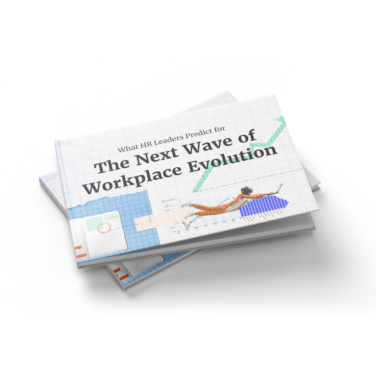So you’ve just been promoted to an HR leadership position? Congrats on your promotion and for winning the faith and admiration of your company’s leadership.
Now the real work begins! With a leadership role comes more responsibility and new expectations requiring new skills and strategies.
Here, I’ll provide practical advice and actionable steps to help your transition into a leadership role.
(Note: While this article focuses on HR career growth, some of the insights and steps are relevant across different disciplines so feel free to share with anyone you know who has transitioned/is transitioning into a leadership role).
Why Are HR Leaders Important?
If there’s one thing that’s frequently held against HR, it’s that it’s viewed as a firefighting (reactionary) department rather than strategic (proactive).
To combat this, HR needs strong leadership to align people strategies with organizational goals. HR leaders play a vital role in:
- Strategic alignment: Ensuring the organization's human resources strategies align with overall business goals so that HR is a strategic partner.
- Talent management: The recruitment, development, and retention of talent through activities such as workforce planning and succession planning.
- Compliance and risk management: Ensuring the organization complies with labor laws and regulations, reducing legal risks, and promoting ethical practices.
- Conflict resolution: Addressing employee relations issues and managing workplace conflicts, promoting harmony and effective communication among employees.
- Change management: Helping lead the organization through changes, such as mergers and acquisitions, the implementation of new processes/systems, and restructuring, ensuring smooth transitions and minimal disruption.
- Compensation and benefits: Designing and managing competitive total compensation packages that attract and retain employees.
- Learning and development: Creating L&D strategies that enhance employees' skills and career growth, leading to a more competent, adaptable, and strategically aligned workforce.
- Diversity, equity, and inclusion: Implementing strategies to promote diversity, equity and inclusion to drive innovation and improve business performance.
Overall, the HR leader ensures that the day-to-day activities of the HR department contribute to the organization’s goals and objectives.
They effectively support and challenge the organization about their most prized asset (employees) by ensuring they are protected, productive, and engaged.
Skills And Competencies Of An Effective HR Leader
As with any leader, an effective HR Leader possesses a combination of skills and competencies that enable them to be an effective leader.
This, coupled with the dynamic nature of HR, leads to quite a complex role. To be successful in an HR leadership role, HR Leaders should possess the following skills/competencies:
- Business acumen: To understand and handle business situations, HR leaders should have general and specific knowledge about the organization they work for and the industry they work in.
- Strategic thinking: Ability to align HR strategies with business goals and anticipate future needs and trends.
- Financial literacy: Even a basic level of financial literacy helps HR leaders capture the attention of influential decision-makers who can help them fund HR projects. Dan George’s article on HR financial literacy is an excellent starting point.
- Communication skills: Excellent verbal and written communication skills to convey information clearly and effectively to various stakeholders.
- Leadership: Strong leadership abilities to inspire, motivate, and guide the HR team and the broader organization.
- Emotional intelligence: High emotional intelligence to understand, manage, and leverage emotions effectively in the workplace.
- Problem-solving: Strong problem-solving skills to address and resolve employee issues, conflicts, and organizational challenges.
- Networking skills: Ability to build and maintain positive relationships with partners across departments at all levels.
- Conflict resolution: Expertise in resolving conflicts and facilitating effective communication and cooperation among employees.
- Change management: HR leaders play a central role in guiding employees through transitions, ensuring clear communication, reducing resistance, and maintaining productivity.
- Data analytics: Proficiency in analyzing data and HR metrics to inform decision-making and strategy development.
- Technical proficiency: Familiarity with HR software and other business management tech to streamline HR processes and improve efficiency.
- Cultural competence: Understanding and valuing diversity and the ability to create an inclusive workplace culture.
- Coaching and mentoring: Ability to coach and mentor employees and managers to enhance their performance and development.
Mastering these skills/competencies helps HR leaders create a fair and positive work environment, drive organizational success, and support employee development.
Read more in my article about key skills for HR professionals to grow in their careers and make more impact in their organizations.
How To Develop And Demonstrate HR Leadership
As mentioned, a position of leadership and influence brings new expectations.
You’ve already built creditability and trust from your leadership and peers, but going forward you will be held to even higher standards and expected to make a significant impact in the organization.
This is both an exciting and daunting prospect.
The 70:20:10 model of learning states that “70% of learning comes from experience, experiment, and reflection, 20% percent from working with others, and 10% from formal interventions and planned learning solutions.”
So, 70% of your learning will come from trial and error and reflections. Below are some tips and ideas for how you can get your leadership journey started on the best footing:
Mindset shift
Moving from an individual contributor to a leadership role requires a different type of mindset to perform and succeed.
The saying “What got you to this point will not take you to the next,” comes to mind.
Using the skills and competencies listed above, you’ll need to reflect on your strengths and weaknesses and decide what you can do to leverage and improve them.
For example, it isn't enough to be an HR professional in XYZ industry, you need to act as an XYZ expert in the role of HR.
You will be required to know the industry you work in, how your organization works and generates revenue, and its main business objectives.
Empathy and collaboration
As a leader, you’re measured on the success of your team (think “How do we succeed?” rather than “How do I succeed?”)
This means prioritizing team goals over individual goals. You will need to lead a team, which means understanding them as individuals, dealing with conflicts, and nurturing a trusting and collaborative work environment.
To build trust with the team, it’s important to demonstrate empathy. This can be achieved with active listening, seeking to understand your team members’ points of view, and showing concern or interest in points they bring up.
I suggest meeting with the team to outline your vision for the future and how you will work together going forward.
You should also meet with each team member and address any individual concerns they may have.
This will build an open and transparent team culture in which people are more engaged and motivated to work towards the organization's objectives and goals.
If you’re becoming the leader of a team you’re already a part of, I recommend reading Rosanna Campbell’s excellent article ‘From Friend to Boss: How To Establish Authority & Set Boundaries As A New Manager’.
Effective delegation
Delegation is one aspect of management/leadership that I struggle with personally.
While doing it yourself may seem the preferable option, there isn't always time for this and maybe there’s someone who’s either better at a particular task than you or willing to take it on.
To improve delegation skills, start by understanding the strengths and weaknesses of your team members and assign tasks that align with their skills and career development goals.
As per the last section, from your conversations with the team and the individual members, you should have an idea of everyone's roles and aspirations.
For example, maybe your organization is moving from one HRIS to another and it requires a lot of tedious tasks you do not have time to do.
Using your knowledge of the team, you can delegate this task to someone who is responsible for the HRIS or who has expressed an interest in this area. Or, if your HR team is large or overwhelmed with support requests, you could implement HR service delivery software to track and delegate tasks needing follow-up.
Lastly, ensure that you have built enough trust and transparency within the team so that, if they're unclear about anything or have hit a roadblock, they feel comfortable and confident that informing you will be able to help them move forward.
This ensures that team members are confident in your support and ensures successful task completion.
Continuous learning
There’s no resting now. Now that you’re in a leadership position, it’s more important than ever to invest in yourself and continue developing.
With the ever-changing landscape in the world of work, it’s easy to be left behind. In any leadership position, you will need to stay ahead of the curve on the latest going on in various fields related to HR.
Legislation, learning and development methodologies, and the latest employment trends are just some areas where you will need to be updated.
As mentioned above, you should also ensure that you are leveraging the other 20% (working with others) & 10% (formal learning interventions) of learning.
I recommend ensuring that you’re active in various peer groups. Personally, these help me by providing access to other professionals with solutions or information on the various challenges I’m dealing with. This will help you develop a playbook for dealing with whatever comes your way.
I also recommended that you attend HR conferences a few times a year to hear the latest updates in the world of HR, as well as subscribe to a few HR newsletters and HR podcasts.
To stay updated on employment law, I follow a few well-known employment law consultants in the territories I’m responsible for.
You can also learn about leadership in general by listening to leadership podcasts and subscribing to leadership newsletters.
Additionally, by acting as a role model for continuous learning, you will foster a learning culture within the team.
You can further encourage this with self-directed learning, providing access to online courses, and promoting knowledge sharing among team members.
Learn what your colleagues do
As mentioned in previous sections, you learn 20% from working with others. What others do and how they do it is a great way to understand and learn new skills and knowledge.
When you move into a leadership role, one of the first tasks is to learn what your peers do.
Understanding this will help you to build stronger relationships, foster a collaborative environment, and enhance communication. It can also help you to identify strengths and potential gaps in the HR processes and procedures.
Your peers will also appreciate the endeavor in taking the time and effort to understand their role and will increase their feeling of being valued.
HR Leadership Strategies
HR leadership strategies are designed to align human resource practices with organizational goals, improve employee performance, retention, and engagement, and create a positive working environment. Here are some strategies in detail:
Leadership relationships and alignment
Being a leader can often be a lonely role, but building strong relationships with peers in the leadership group can help combat this. These connections, whether as “sparring” partners or mentors, are essential for a leader's success.
For instance, the relationship between the Head of HR and the CEO is crucial. Having a close rapport with the CEO and other leaders enables HR to create impact and improve employee experiences. Without this relationship, HR initiatives may never even be considered at the leadership table.
Therefore, it’s imperative for HR leaders to nurture relationships with key leaders within the organization, both formally and informally.
Formal approaches may include frequent meetings to understand the challenges and needs of leaders and their teams, while informal interactions, such as regular lunch meetings, allow the HR leader to get to know their peers on a more personal level and develop a more holistic view of their needs and priorities.
Equally important is the alignment of HR activities with the broader business strategy. It is the responsibility of the HR leader to ensure that the HR department’s daily tasks and initiatives support the organization’s strategic goals.
For example, if the company aims to become an “Employer of Choice,” the HR strategy should focus on recruiting talent effectively, offering competitive compensation, and enhancing employer branding.
To align HR and business strategies, the HR team should meet at the beginning of each year to set clear goals and ensure alignment, with regular follow-up meetings to track progress (i.e. every quarter).
At the end of the year, the HR team's activities should be evaluated against the business goals, and the process should be repeated for the following year to ensure continued alignment.
Employee listening
Employee listening is an important strategy for HR leaders because ultimately you’re assessed on employee retention, engagement, and recruitment.
A solid employee listening strategy will help HR leaders understand worker sentiment and how the employer value proposition can be improved to retain talent, motivate them, and attract new talent.
A good example of employee listening is an employee engagement survey. However, it isn't as simple as just implementing a survey and waiting for the results to come in.
You have to decide on how often you will survey employees (too often = survey fatigue, too little = data will become irrelevant quickly), what questions you will ask and how you will measure them, and, most importantly, how you will action feedback received from the employees.
On a day-to-day basis, employees should also feel that they have a voice and can raise their concerns or share ideas without issue.
This can be achieved by ensuring that employees are asked for their feedback and have access to leadership.
Employee recognition
Employee recognition is a significant area for strategic focus as it can lead to more engaged and connected employees. However, in my experience, very few organizations get it right.
Organizations need to have a strategy in place for recognizing individuals for work done beyond their normal scope of work (i.e. when they go beyond their remit to help the organization to achieve its goals/objectives).
An easy place to start is to have frequent recognition programs in place.
An employee of the year, quarter, or month is a good start, the frequency will depend on the type of recognition you want to proceed with and budgeting.
However recognition is not just a once-a-year thing, it should be done every day/week in which the employee contributes to their role.
Line managers should also recognize their employees frequently.
Having a strategy in place for how the organization recognizes employees and for types of contribution will help line managers ensure that there is a culture of recognition in the organization from the ground up.
People Ops as a product
People operations encompass all the processes and procedures that happen in the background that nobody sees.
Every process and procedure has discreet steps and stakeholders to ensure they run effectively and efficiently. For example, your onboarding process would be one of those processes.
Viewing People Operations as a product helps shift HR from a traditional support role to a strategic function that delivers value-driven experiences for employees.
By treating HR services and initiatives as products, HR leaders can adopt a customer-centric approach, focusing on the needs, preferences, and feedback of employees as their "customers."
This perspective encourages continuous improvement, design thinking, and data-informed decisions, enhancing employee engagement and overall satisfaction.
Understanding people operations as a product helps HR leaders create scalable and repeatable processes, ensuring consistency and quality across employee touchpoints.
It also enables them to measure success through metrics similar to product KPIs, such as adoption rates, satisfaction scores, and retention, which provide actionable insights to drive improvements.
Effective operating models
In military terms, the HR Leader is the general and is responsible for structuring the department in a way that maximizes effectiveness across the organization.
HR being such a fluid role, it’s important to have an HR operating model that ensures that HR services are provided effectively and efficiently across the organization. It will also help teams to know what their responsibilities and daily tasks are and help ensure that HR functions align with the company’s strategic objectives.
From my experience, a well-designed operating model enables HR leaders to maximize the HR team's output.
They’re able to streamline workflows, optimize resource allocation, and improve service delivery, ultimately enhancing employee satisfaction and organizational performance.
However, you have to be aware of the models that are available and what models work best where.
In the past, in order to assess which HR model works best, I’ve started by looking at my company’s strategic goals and workforce needs.
Then I would consider the organization's size, structure, and culture, as these will influence whether a centralized, decentralized, or hybrid HR model aligns best.
After that I evaluate the current HR practices, identifying strengths and weaknesses.
Finally, involve key stakeholders to ensure alignment and consider feedback from employees to understand their needs and expectations.
Data-driven decision making
HR leaders need to be adept at knowing how to collect and interpret data and, importantly, put it into action by making data-driven decisions.
Other stakeholders should also be made aware of these datasets from a people perspective.
Like management receiving monthly or quarterly financial reports, they should also get frequent updates on the people landscape.
For example, I provide my leadership with a monthly view of people metrics i.e. headcount and attrition data sets.
You can also show data points from the HR side (hired, promotions, leavers, etc) every month and HR activities that took place during that period.
Having an idea of who you are presenting to and what they want will help you to get the most out of your data sets.
For example, for the senior executive team, your data sets should be short and snappy and show the relevant information without too much searching. Usually, it will require direct links to financial aspects of the organization and border strategic aims.
You can read more on this and how to create some useful personas in Liam Reese’s excellent article HR data analysis.
Becoming a skills-based organization
Skills-based organizations already have a competitive advantage over the more traditional title/role-based organizations. This is because they are better prepared for the skill needs of the future and can plan their strategic talent readiness.
Becoming a skills-based organization involves shifting focus from traditional job titles and roles to the specific skills employees bring and need to develop, creating a more flexible and agile workforce.
For HR leaders, understanding and implementing a skills-based model offers a pathway to optimize talent allocation, increase employee retention, and future-proof the workforce against skills gaps and evolving industry demands.
This was evident in my org recently when a sudden request from a client requiring certain skill sets allowed us to jump ahead of the competition.
We have a number of employees who have valuable IT skills and using those we were able to leverage this to upskill and retrain them to address this request from the client.
Without being a skill-based (or skill-aware) organization we would not have been flexible enough to respond to this client request.
What Are Some Common Challenges HR Leaders Face?
All leaders face specific challenges in their area of domain. However, HR has some very tricky challenges that require not only intervention within the HR team but also the involvement of other leaders and departments.
Here are some examples of challenges that will face every HR leader:
Strategic partner
“Ensuring HR has a seat at the decision table” is a sentiment I often hear in HR communities.
This can be seen in that you don't usually hear the above sentiment about any other function.
Why is this? That's probably for another article, however, this is a challenge that all HR leaders face; ensuring that HR has a real impact on the organization.
To increase HR’s reputation as a strategic partner, HR leaders should start by shifting the department’s focus from administrative tasks to more value-driven initiatives that align with the organization’s overall business objectives.
This can be achieved by demonstrating a deep understanding of the company’s vision, goals, and challenges, and then proactively offering HR solutions that contribute to growth and innovation.
HR leaders should also invest in data analytics (department capability and resources) to provide insights that inform key business decisions, such as talent management, employee engagement, and organizational effectiveness.
Lastly relationships should be built with other leaders and departments by ensuring they are considered in the overall people strategy.
With this, HR can establish itself as a trusted advisor, rather than merely a support function.
It will require strong communication, the ability to drive change, and an agile approach to adapt to the evolving needs of the business, ultimately proving HR’s critical role in the organization’s success.
Technological advancements
As with any industry and profession, the advancements of technological advancement and adoption have profound effects.
As technology evolves it introduces not only new efficiencies but also new challenges. For example, not since the introduction of the internet have we seen such a dramatic effect on the workplace as AI has had.
With AI, HR has a new tool to support them in their role. It also introduces potential new challenges such as managing a workforce made of people and AI, ethical AI, and potential roles being replaced by AI.
HR doesn't stand still in the age of technological advancement and this presents new opportunities and challenges around every corner for HR leaders.
It will require the HR leader to ensure they are up to date on the latest technological trends not only in HR but in the industry that they work in. This will help to ensure they stay ahead of the curve and can prepare for the workplace of the future.
Multigenerational workforce
In the US, Gen Z is set to outnumber baby boomers in the workforce by the end of the year. For HR leaders, managing a multigenerational workforce involves recognizing and valuing the diverse perspectives and experiences that different age groups bring to the table.
This is extremely difficult to capture cohesively. It is important to foster an inclusive culture that encourages collaboration and mutual respect among employees of all ages.
Each of these groups will have different needs and wants and the strategy of the HR department to address these needs to be flexible.
Examples of achieving this could be policies such as offering flexible work arrangements, tailored professional development opportunities, etc.
In addition, HR leaders should ensure they are leveraging the strengths of each generation (Tech savvy younger employees, seasoned and experienced older workers, etc.) can enhance overall organizational performance.
Organizational goals vs employee needs
There is an opinion among some employees that HR protects only the organization and sometimes I have come across employees saying that HR needs to fight more for the employee. Of course, the truth comes somewhere in the middle.
Balancing organizational goals with employee needs is a critical task for HR and HR leaders. Trying to align the company’s strategic objectives with the well-being and professional aspirations of its workforce is a difficult (and thankless) task.
I’ve found that a good tactic here is for HR leaders to help nurture a culture of transparency and communication.
In other words, in an environment where HR aims to further the goals of the organization, employees need to feel valued and heard (see section on employee listening).
Policies that support work-life balance, provide opportunities for career growth and recognize individual contributions should be designed and implemented by HR.
By doing so, employees remain motivated and engaged, which in turn drives the organization towards its goals.
Ultimately, a harmonious alignment between organizational objectives and employee needs leads to a more productive and satisfied workforce.
Navigating remote work and hybrid work environments
If the COVID pandemic taught us anything, it's that work is no longer just confined to the office. Workers who got used to working from home and its advantages are not likely to let it go anytime soon.
Navigating the demand for remote and hybrid work environments presents unique challenges and opportunities for HR leaders. More work has to be done to ensure effective communication and collaboration across dispersed teams.
This needs to be done by leveraging digital tools and platforms to bridge the gap. Establishing clear policies and expectations around remote work is crucial, as is providing support for employees’ mental health and well-being.
HR leaders should also focus on fostering a strong organizational culture that transcends physical boundaries, promoting inclusivity and engagement regardless of location. The focus should be on offering flexibility and maintaining a focus on outcomes rather than hours worked.
Employee mental health and wellness
In today’s ever-changing and fast-paced working world, employee wellness, and mental health are critical areas of focus for HR leaders.
To effectively foster a healthy work environment, HR leaders (and leaders in general) must prioritize their own mental health, model healthy behaviors, and create a culture of open communication and support.
This approach not only enhances employee well-being but also drives organizational success by promoting a more engaged and productive workforce.
The Road To Leadership Excellence
A lot of blood, sweat, and tears have brought you to this step of your career journey. While I encourage you to enjoy and bask in the light of your achievement, I would also remind you that now is not the time to take for granted this progression.
There is a steep learning curve ahead of you and you need to embrace this and know that you are going to make mistakes.
The unique position of an HR leader allows us to bridge the gap between organizational goals and employee needs, fostering a culture of growth, innovation, and resilience.
With time, you will grow and develop and you will be able to leverage your expertise in talent management, strategic planning, and employee engagement.
HR leaders are not only unlocking their leadership potential but also empowering others to reach new heights.
Subscribe To The People Managing People Newsletter
For more guidance on HR leadership, subscribe to our weekly newsletter for HR and business leaders. You’ll receive all our latest content to help you grow in your career and make greater impact in your org.
FAQs About HR Leadership
What are some human resources leadership job titles?
As highlighted in one of my previous articles HR career paths, there are many different roles within HR with varying levels of responsibility.
Below are some examples of leadership roles within the HR function (organization-dependent):
- Chief Human Resources Officer (CHRO): The CHRO oversees all HR functions, aligning them with the organization’s strategic goals and acting as a key advisor to the executive team.
- Vice President of Human Resources: The VP of HR directs the HR department’s overall operations, policies, and practices to ensure alignment with the company’s objectives.
- Director of Human Resources: The HR Director manages HR staff and implements HR strategies, policies, and programs to support business goals.
- Senior Human Resources Manager: This role involves overseeing HR activities and projects, providing strategic HR support, and ensuring compliance with labor laws and regulations. Senior HR Managers usually lead a team of generalists or administrators.
- Human Resources Business Partner Lead (HRBP): An HRBP works closely with business leaders to develop and execute HR strategies that support the business’s needs and goals. HRBP Leads are responsible for the HRBP function and set the strategy for this important team.
- Head of Talent Acquisition: The Head of Talent Acquisition leads the recruitment process, including sourcing, interviewing, and hiring new employees.
- Head of Learning and Development: This leader designs and implements learning and development strategies to enhance employees’ skills and career development.
- Head of Compensation and Benefits: Manage the organization’s compensation and benefits programs, ensuring they are competitive and aligned with business objectives.
- HR Operations Director: The HR Operations Director oversees the day-to-day HR operations, including HR systems, processes, and compliance.
- Director of Diversity and Inclusion: They create and implement strategies to promote a diverse and inclusive workplace culture.
- Organizational Development Director: This role involves designing and implementing programs to improve organizational effectiveness and employee performance.
Despite the above positions differing in terms of focus, all are connected in that they are leadership roles and are expected to be role models and lead the department/team they’re responsible for.
How do HR leaders contribute to organizational success?
HR leaders help shape the company’s culture, drive employee engagement, manage talent effectively, and ensure a high level of productivity.
By focusing on strategic workforce planning, leadership development, and employee retention, they ensure the organization has the right people in place to meet its objectives.
What role does HR leadership play in legal compliance?
HR leaders ensure that the company adheres to local, state, and federal labor laws and regulations. This includes handling issues such as wage and hour compliance, workplace safety, employee rights, and avoiding discrimination or harassment. They also stay updated on changing regulations to mitigate legal risks.
How do HR leaders measure the effectiveness of HR programs?
HR leaders use various metrics and KPIs, such as employee turnover rates, time-to-hire, employee engagement scores, and training ROI, to measure the success of HR initiatives. They also rely on feedback from employees and managers to continuously improve programs.




